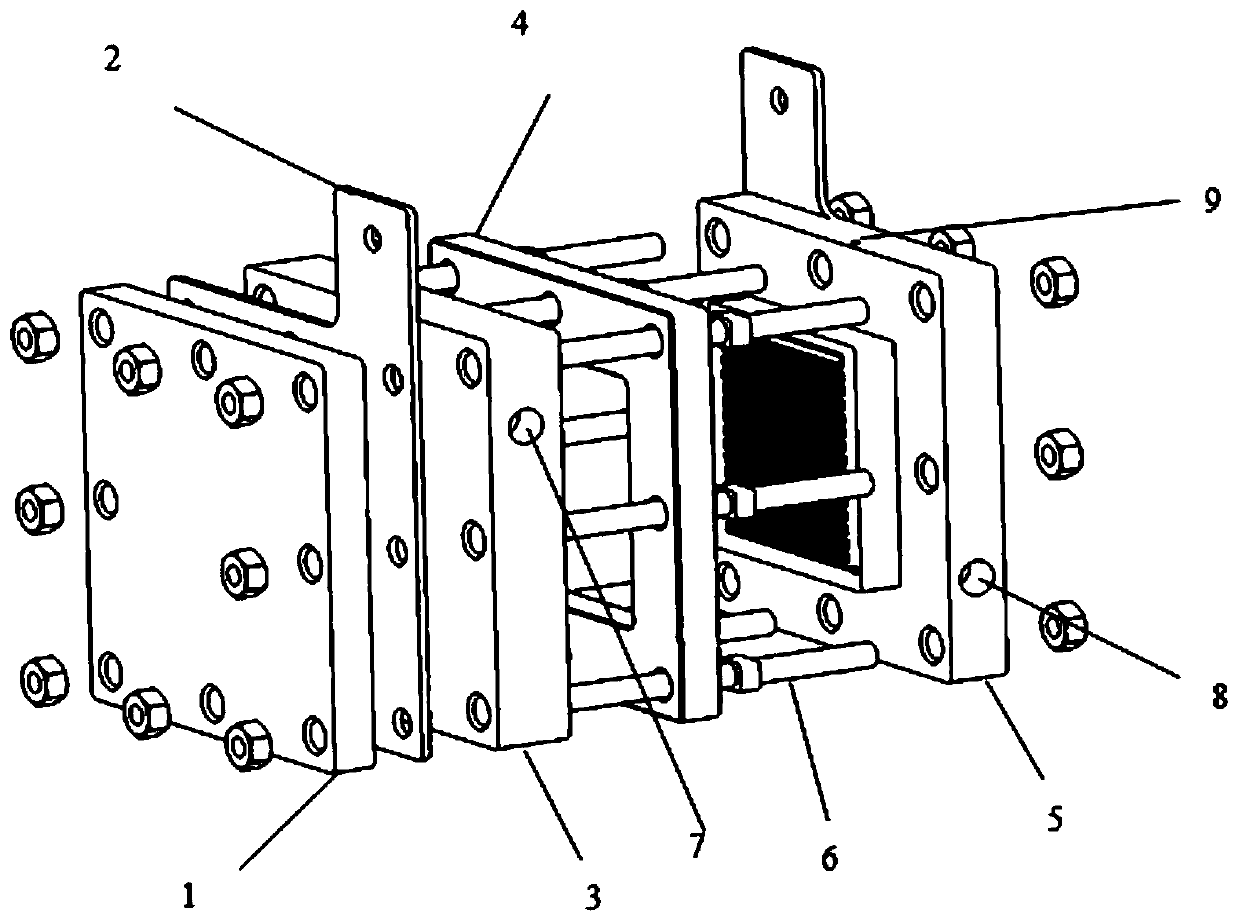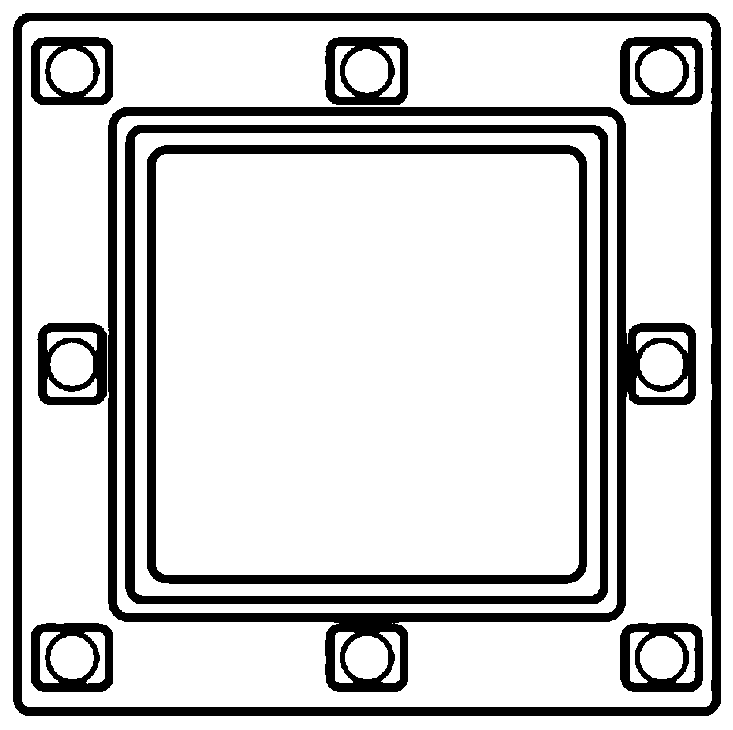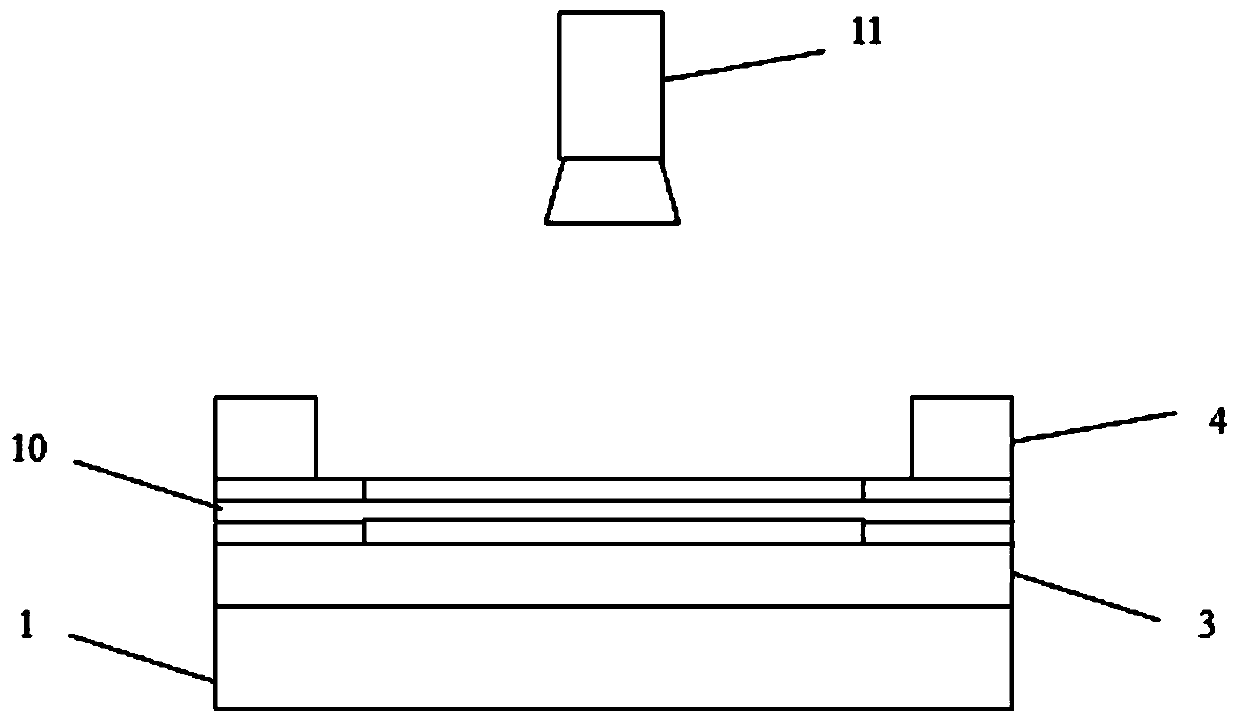Test fixture for quasi-in-situ detection of membrane electrode perforation point by utilizing infrared thermal imaging
A technology of infrared thermal imaging and test fixtures, which is applied in the application of electrical devices to test fluid tightness, measuring devices, optical radiation measurement, etc., can solve the mechanical damage of membrane electrodes and the inability to effectively identify the formation time of each point. Membrane electrode performance or durability and other issues to achieve the effect of improving life expectancy
- Summary
- Abstract
- Description
- Claims
- Application Information
AI Technical Summary
Problems solved by technology
Method used
Image
Examples
Embodiment Construction
[0027] The technical solutions in the embodiments of the present invention will be clearly and completely described below in conjunction with the accompanying drawings in the embodiments of the present invention. Obviously, the described embodiments are only a part of the embodiments of the present invention, rather than all the embodiments. Based on the embodiments of the present invention, all other embodiments obtained by those of ordinary skill in the art without creative work shall fall within the protection scope of the present invention.
[0028] It should be noted that the experimental methods described in the following embodiments are conventional methods unless otherwise specified, and the reagents and materials, unless otherwise specified, can be obtained from commercial sources; in the description of the present invention, The terms "horizontal", "vertical", "upper", "lower", "front", "rear", "left", "right", "vertical", "horizontal", "top", "bottom", The orientation ...
PUM
 Login to View More
Login to View More Abstract
Description
Claims
Application Information
 Login to View More
Login to View More - R&D
- Intellectual Property
- Life Sciences
- Materials
- Tech Scout
- Unparalleled Data Quality
- Higher Quality Content
- 60% Fewer Hallucinations
Browse by: Latest US Patents, China's latest patents, Technical Efficacy Thesaurus, Application Domain, Technology Topic, Popular Technical Reports.
© 2025 PatSnap. All rights reserved.Legal|Privacy policy|Modern Slavery Act Transparency Statement|Sitemap|About US| Contact US: help@patsnap.com



